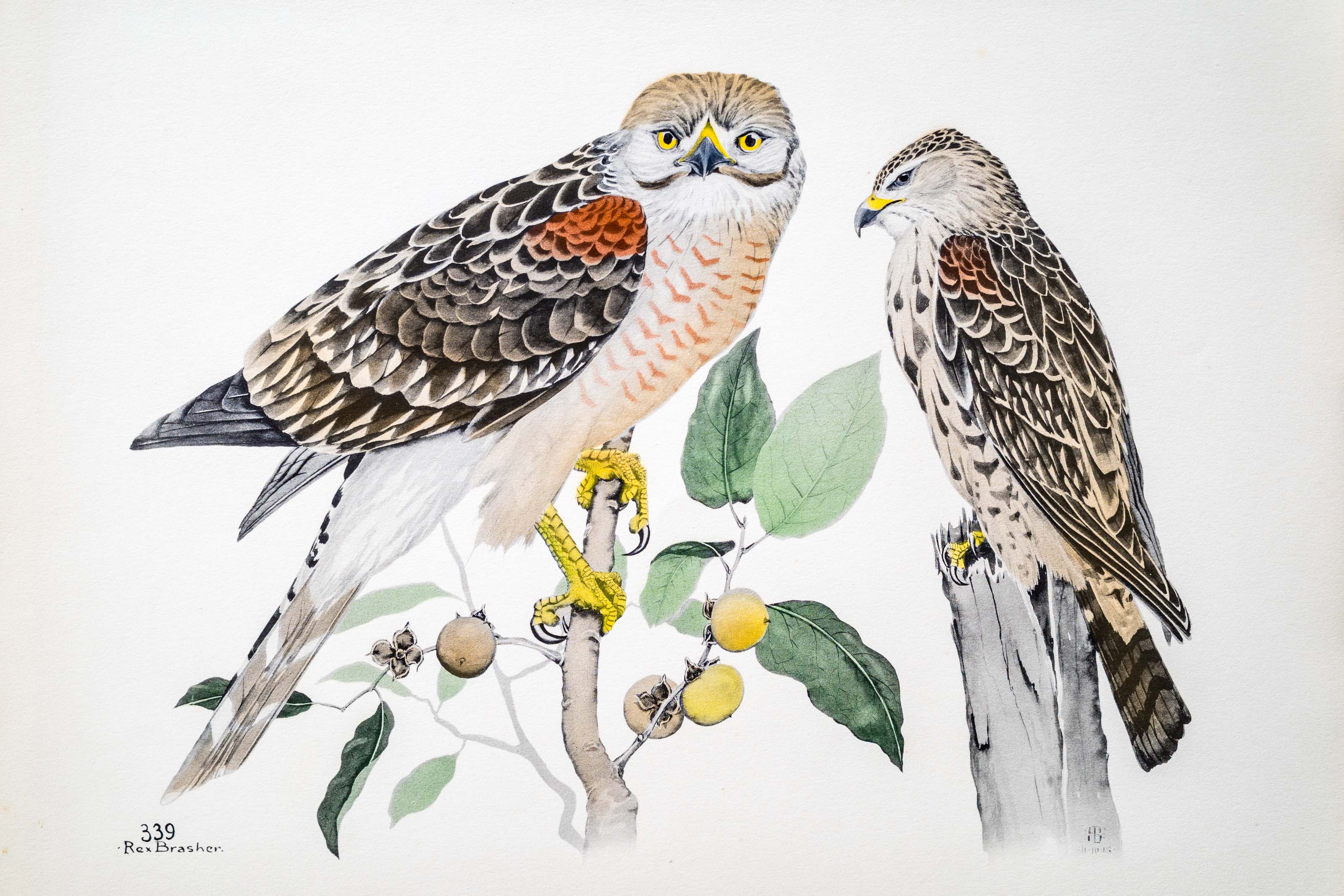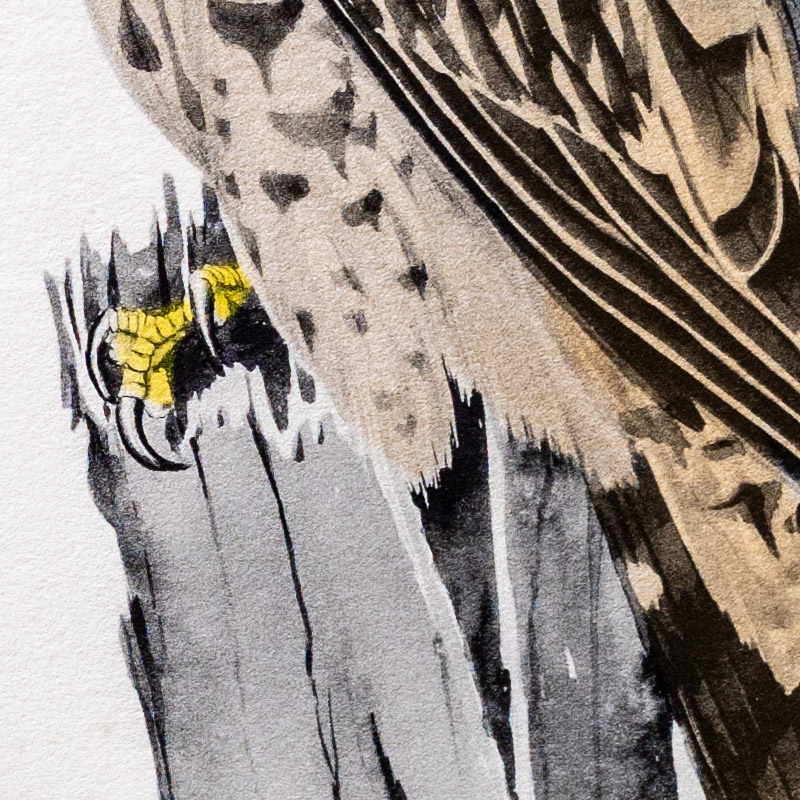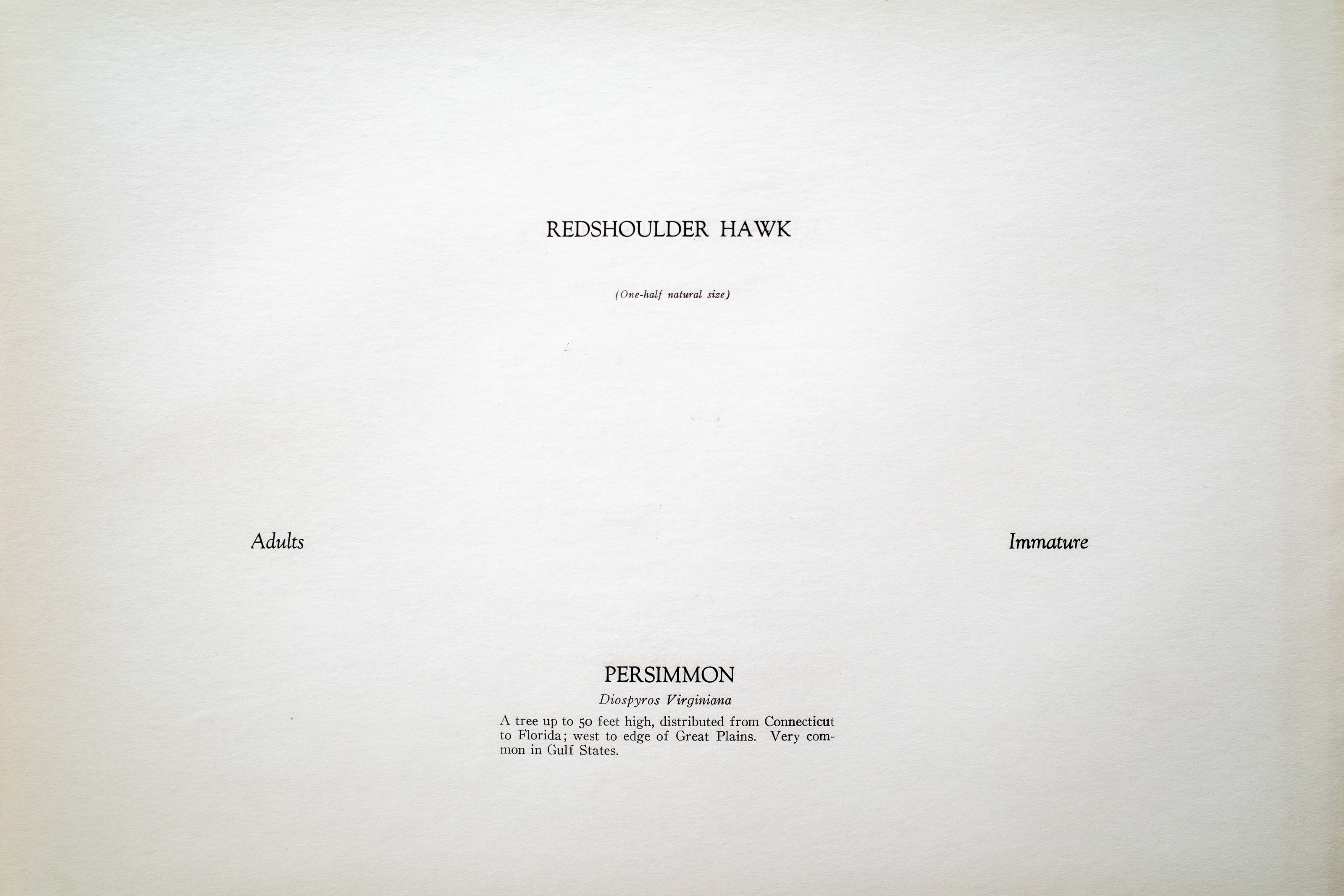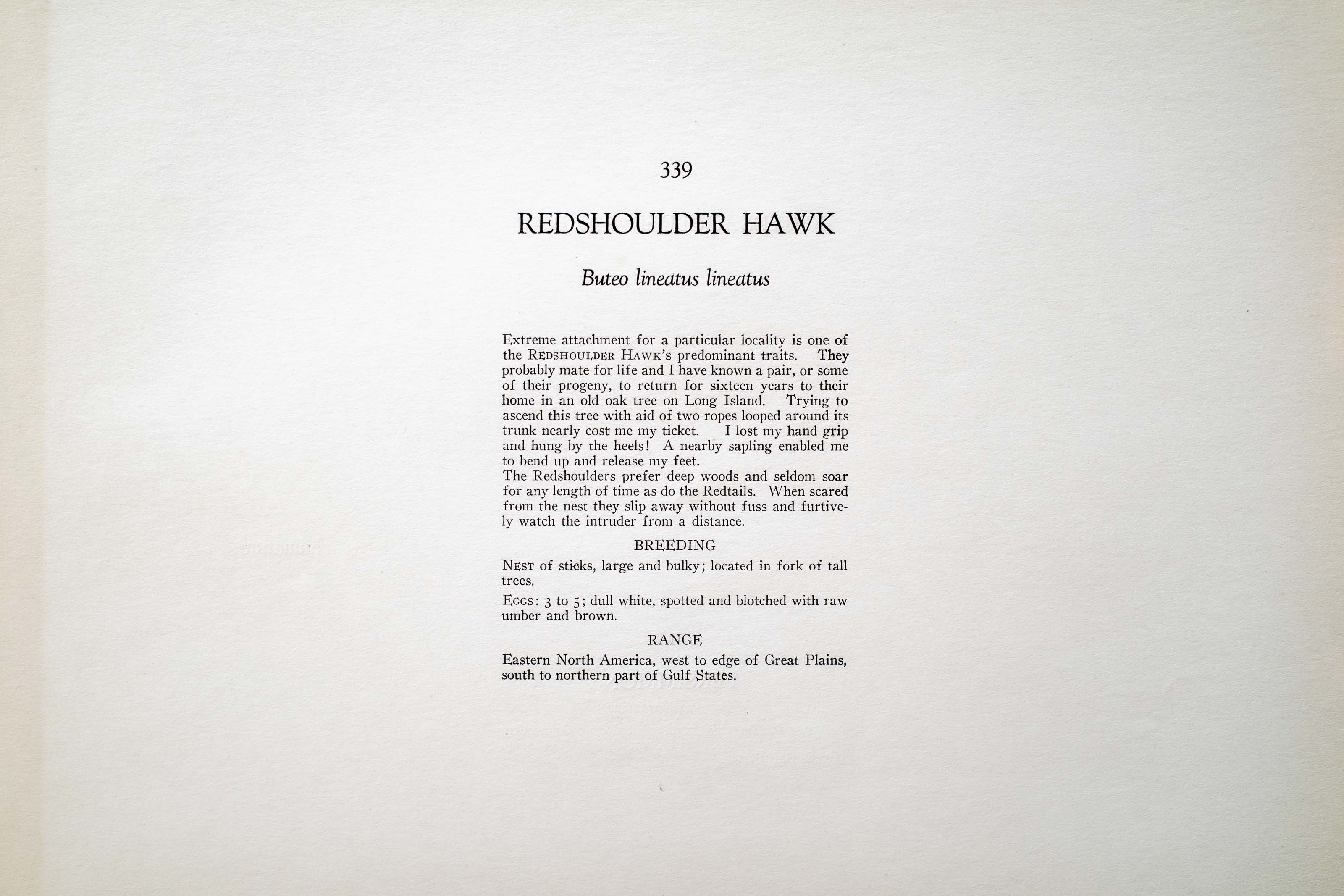






1912
1930
5
339
A team of dedicated board members, volunteers, and student interns has published every page in Volume 9. This volume includes 360 images of paintings and lyrical descriptions of birds, now available online for everyone to enjoy anywhere in the world. This is a monumental task. Each volume requires approximately 400 hours to photograph, edit, transcribe, catalog, and publish online. We need your support to complete this work.
If you're tech-savvy, have a good eye, are meticulous with details, and love structured data, please consider volunteering by emailing us at hello@rexbrasher.org.
We encourage all bird lovers and supporters to consider a monetary donation to support our mission to make Rex's work available for everyone. You can provide a one-time or recurring donation online.
Extreme attachment for a particular locality is one of the REDSHOULDER HAWK'S predominant traits. They probably mate for life and I have known a pair, or some of their progeny, to return for sixteen years to their home in an old oak tree on Long Island. Trying to ascend this tree with aid of two ropes looped around its trunk nearly cost me my ticket. I lost my hand grip and hung by the heels! A nearby sapling enabled me to bend up and release my feet.
The Redshoulders prefer deep woods and seldom soar for any length of time as do the Redtails. When scared from the nest they slip away without fuss and furtively watch the intruder from a distance.
NEST: of sticks, large and bulky; located in fork of tall trees.
EGGS: 3 to 5; dull white, spotted and blotched with raw umber and brown.
Eastern North America, west to edge of Great Plains, south to northern part of Gulf States.
A tree up to 50 feet high, distributed from Connecticut to Florida; west to edge of Great Plains. Very common in Gulf States.